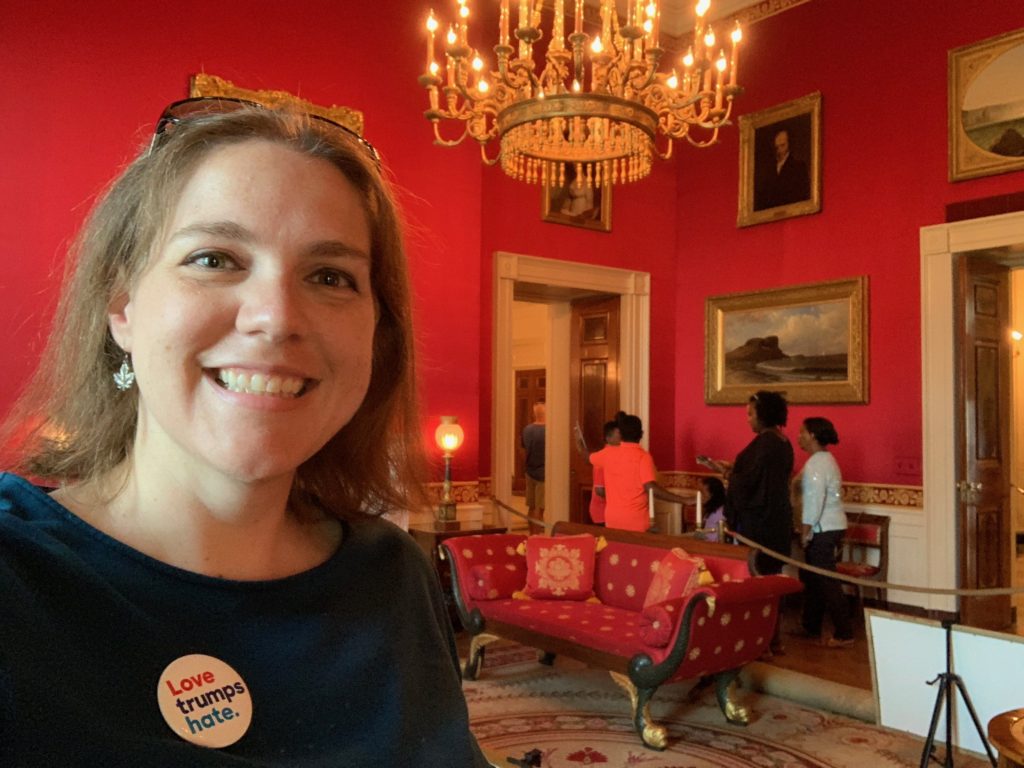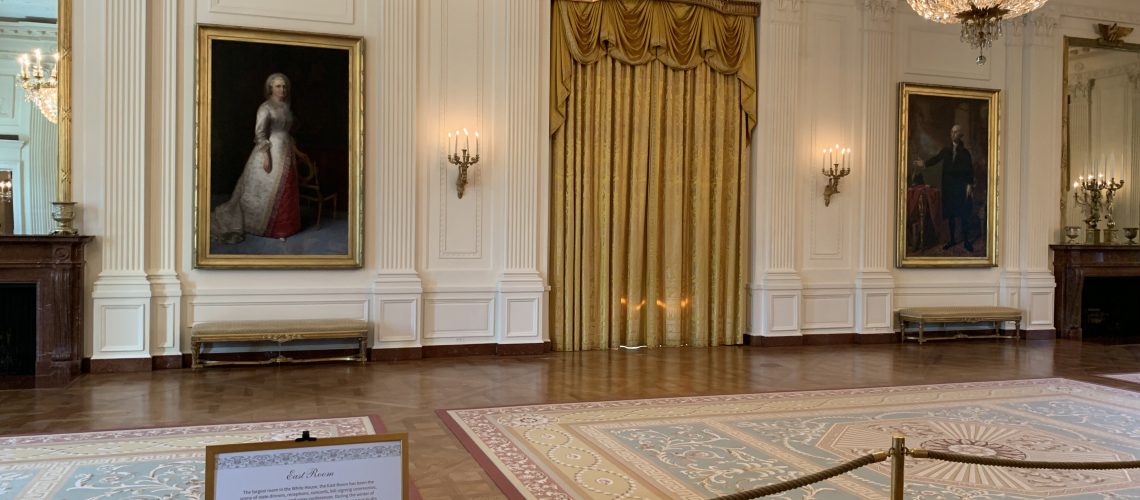Every four years, there’s a great big ceremony where the President is sworn in, but sometimes it’s just an act.
Note: This is the fourth and final installment in my series on Presidential Inaugurations.
Part One: Inaugurations at the US Capitol
Part Two: Inaugurations elsewhere in Washington, DC
Part Three: Inaugurations outside of Washington, DC
Part Four: Bonus Inaugurations
So, this is where things get a little weird. While my first three posts covered all the sites where “the” inauguration took place for each President, there are some cases where the President actually took the oath of office twice for the same term. This post is about the other time the oath was taken.
So, if a President was sworn in twice, which one is the main inauguration and which one is the “other?”
Stepping back to something I mentioned in Part One, there is some inconsistency with how the term “inauguration” is used. Sometimes it is used to refer specifically to the big, traditional ceremony held every four years at the start of a full term. In that case, the “inauguration” is really the event itself, and Presidents that take over mid-term don’t have inaugurations; they just “take the oath of office.” Other times, the term “inauguration” is applied more broadly, to include when the VP takes over due to death or resignation (that is how I use it on this site). This would imply that “inauguration” in this case is more the act of being sworn in to office, whether there is a big hoopla or not.
It gets tricky trying to come up with one concise definition of what is the “main” inauguration if you do use the broader definition. But, here’s the best rule of thumb for what the general public considers to be “the” inauguration, the one you will find on any Presidential Inauguration list, such as this one from the US Senate:
For Presidents taking over in the middle of a term, “the” inauguration is always the first time they take the Oath of Office. For Presidents being sworn in at the start of each regular four-year term, “the” inauguration is always the one with the big, traditional, public ceremony, regardless of whether or not the President had already taken the oath office for that term and officially assumed office prior to the ceremony.
Why Two Oaths?
So why would the President take the Oath of Office more that once? In most cases, it has to do with the official Inauguration Day falling on a Sunday. In other cases, it’s because there is some question about the first administration of the oath and it is re-administered just to be safe.
Times the Oath wasn’t taken twice…but could have been
It took a little time before taking the oath twice if Inauguration Day falls on a Sunday became a thing. The first time this issue came up was Sunday, March 4, 1821. James Monroe, about to start his second term, questioned whether inaugurations could or should occur on a Sunday, when courts were closed, so he discussed with the Supreme Court and they ended up postponing the oath and ceremony one day.
Twenty-Eight years later, in 1849, Zachary’s Taylor became the next President to deal with Inauguration Day falling on a Sunday. Like Monroe, he postposed both the oath and the ceremony until Monday. This left a one-day gap between the end of James K. Polk’s term and Taylor taking the oath, which some claim made David Rice Atchison, President Pro-Tempore of the Senate, the President for one day, according to the succession rules at the time. This is a Presidential fun fact without much substance. For starters, the end date/time of a President’s term wasn’t specifically defined until the passage of the 20th Amendment in 1933. Second, claiming that Atchison was President because Taylor hadn’t taken the oath yet doesn’t make a ton of sense when Atchison hadn’t taken the oath either.
OK, so there’s two examples of Presidents not taking the oath more than once for the same term. But that’s not what this post is really about. Enough background, on to the double-inaugurations!
Rutherford B. Hayes’ Inauguration, 1877

The next time March 4 fell on a Sunday, it was Rutherford B. Hayes’ turn. The 1876 election was highly contested and was not finally decided until March 2, 1977, nearly four months later. Because of this, there was a concern about Democrats attempting to disrupt the peaceful transfer of power (Rutherford was succeeding fellow Republican Ulysses S. Grant). So, rather that postpone everything to Monday with that awkward one-day gap, Grant and Hayes got the evening of Saturday, March 3 and held a small, secret swearing-in ceremony in the Red Room of the White House. Hayes then took the Oath of Office a second time at what we think of as his real inauguration on Monday, March 5.
Visiting: The Red Room is one of the rooms seen on the White House Tour. It was was dismantled and rebuilt during the Truman’s major White House reconstruction effort and has had some other renovations, but it’s in the same spot as it was in 1877.
Chester A. Arthur’s Inauguration, 1881
Following President Garfield’s death, Arthur took the Oath of Office at his home in New York City on September 20, 1881. Two days later, on September 22, he took the Oath a second time in the Vice President’s Room in the US Capitol. The Constitution doesn’t place any requirements on who can administer the Oath, but the Oath was re-administered to move past any lingering questions about whether the state judge who had administered the Oath in New York was qualified to do so.
Visting: The Vice President’s Room is not on the standard US Capitol Tour. I haven’t come across anything specifically noting how visitors can see it, but I would speculate that access is similar to that of the President’s Room (see below).
Woodrow Wilson’s Second Inauguration, 1917
By the fourth time Inauguration Day fell on a Sunday, the concept that Inauguration Ceremonies don’t happen on Sunday was well-established. So, Wilson postponed the public swearing-in and other inaugural festivities to Monday, March 5. However, he did become the first President to take the Oath of Office on a Sunday when he took the Oath of Office the first time, privately, in the President’s Room of the US Capitol.
Visiting: The President’s Room is a super fancy room tucked away behind the Senate Chamber. It is not part of the standard Capitol tour, although you can visit if accompanied by a Senator or Congressional staff member when the Senate is not in session.
Calvin Coolidge’s First Inauguration, 1923
As covered in Part One of this series, and my post on the President Calvin Coolidge State Historic Site, Coolidge assumed the presidency on August 3, 1923, upon the Death of Warren G. Harding. The Oath of Office was administered in the middle of the night by his father, who happened to be a notary. Like with Arthur, there was a bit of a question of whether Coolidge’s dad, a state official, “counted” as someone who could administer the Oath. So, on August 21, Coolidge took the Oath in secret at the Willard Hotel. This is where Coolidge had lived as Vice President and during the first days of his Presidency as he allowed Warren G. Harding’s widow time to move out of the White House.
Visiting: The Willard Hotel still operates today on Pennsylvania Avenue in DC, just a couple blocks from the White House. As I type this, I literally just walked by it three days ago, appreciating that it was historic, but not thinking that it was where Coolidge took the oath, so I didn’t stop to take a picture. BIGGEST REGRET OF MY LIFE!!!! (Not really).
Dwight D. Eisenhower’s Second Inauguration, 1957
Following Wilson’s example, Eisenhower took the oath in private on the official Inauguration Day (which had moved to January 20th by this point), and took the Oath again at his public inauguration ceremony on Monday, January 21. The private swearing-in on the 20th took place in the East Room of the White House (see pic at the top of this post).
Visiting: The East Room is visited on the standard White House tour.
Ronald Reagan’s Second Inauguration, 1985
Reagan took the Oath of Office on Sunday, January 20, 1985 in a small, private ceremony in the Grand Foyer (aka the Entrance Hall) of the White House. He then took the oath again the next day at the public ceremony, which was moved indoors to the US Capitol Rotunda due to inclement weather.
Visiting: The Grand Foyer/Entrance Hall is part of the standard White House tour.
Barack Obama’s First and Second Inaugurations, 2009 and 2013

Barack Obama actually had to take the Oath twice for each of his two terms. In 2009, Chief Justice John Roberts flubbed one of the lines of the Oath during the public Inauguration, which resulted in Obama also reciting the words slightly out of order. Exercising an “abundance of caution,” Roberts re-administered the Oath to Obama (correctly) the following evening in the White House Map Room. In 2013, January 20 fell on a Sunday so Obama took the Oath privately that day in the Blue Room of the White House and then again publicly at the Capitol on Monday, January 21.
Visiting: The Blue Room is on the standard White House tour, but the Map Room is not. It’s only a couple rooms away from the tour path though, so if you’re really slick maybe you can slip away and take a peek (not recommended).
(Note: All photos from the White House were added 7/26/2019 following my 7/20/2019 tour of the White House.)

